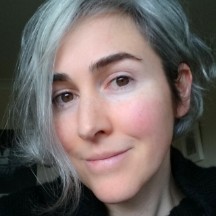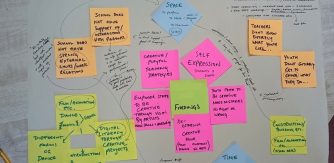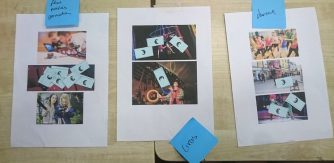Blog 3 – Yvonne Cullivan Creative Associate for Creative Schools & Visual Artist

Image copyright - Workshop on Willow Construction with Artist Tom Meskell at Athenry Boy's National School

Yvonne Cullivan is a visual artist and educator based in the West of Ireland. She has fifteen years experience in Fine Art practice, Arts Education, Public & Participatory Arts and Arts Management. She holds a B.A. in Fine Art from Crawford College of Art and Design, Cork, and an M.Sc. in Multimedia from Dublin City University. Yvonne is a Lecturer at the National College of Art and Design, Dublin, on the First Year Fine Art & Design Programme and in the Fine Art Media Department. She is also currently engaged as a Creative Associate with the Creative Schools Programme.
Working across a broad range of documentary-style media, including sound, video, photography, interview/conversation, drawing and writing, Yvonne's practice is underpinned by a strong participatory and collaborative approach. She often works within communities of place, rooting the engagement in site-specific research and interdisciplinary knowledge generation. Sustained processes of observation, documentation, collaboration and experiential engagement with place, lead to the creation of new work that is reflective of, appropriate to and shaped by the process.
Blog 3 – Meaningful Actions
At this stage in the process, my role as Creative Associate on the Creative Schools programme is one of support. Here is an outline of the activities underway at each school and the decisions that informed them.
The boys at Athenry N.S. voted for the medium of construction and vocalised a desire for greater creative autonomy within activities. Staff voted to explore environmental arts and expressed an interest in professional development around the arts curriculum and cross-curriculum creativity. Both commented on the need for greater cohesion across the school community. Tom Meskell led a willow project, involving the whole school in a large-scale collaboration, with additional CPD for staff. Creative sustainability is encapsulated within the experiential process; the school sees that a whole-school project is possible and how it might work, the staff undertake a tailored exploration of creative collaboration with cross-curricular linkage, the children collectively shape a participatory experience that brings them together as a creative community, and everyone learns a new skill. The resulting work was celebrated with a magical installation at the school for Cruinniú na nÓg. 150 native tress were also planted on the school grounds.
Everyone at Eglish N.S. voted for up-skilling in Digital Media, specifically film and animation. The school has a very creative approach to curricular delivery, but the staff wished to expand on the creative confidence of everyone at the school toward greater self-expression. Again, the children vocalised a need for more creative autonomy and decision-making. Louise Manifold has been engaging the whole school in an exploratory journey of what creativity looks like, using accessible software such as green-screen and stop-motion on the school’s i-pads, and incorporating the children’s interests in movement, performance and nature. Staff are participating in customised professional development sessions that compliment the work with the children. The aspiration is to create a digital ‘guide to creativity’ informed by the children for children, which will be shared with families and peers and used by the school into the future.

Forest School Workshop by Down to Earth at Galway Educate Together National School
A programme of activities around food and nature, considering sustainability, regeneration and wellbeing, and involving talks, events, workshops and screenings, is in flow at Galway Educate Together N.S. The children voted overwhelmingly for cooking; a category that a voluntary children’s panel added to my long list of creative media. The staff showed a preference for nature-based activities. There was a shared desire to interact with external partners and off-site activities and an overall ambition to recognise, celebrate and communicate creative activities within the school and across the school community. The fifteen classes are each engaging in specialised workshops and choosing from an additional menu of activities around the expanded theme. Examples include foraging, farm walks, herbal tincture making, pollinator workshops, documentary screenings, wildflower sewing and forest school activities. The consultation process and this devised programme are also providing valuable research for an upcoming Per Cent for Art project for the school.


